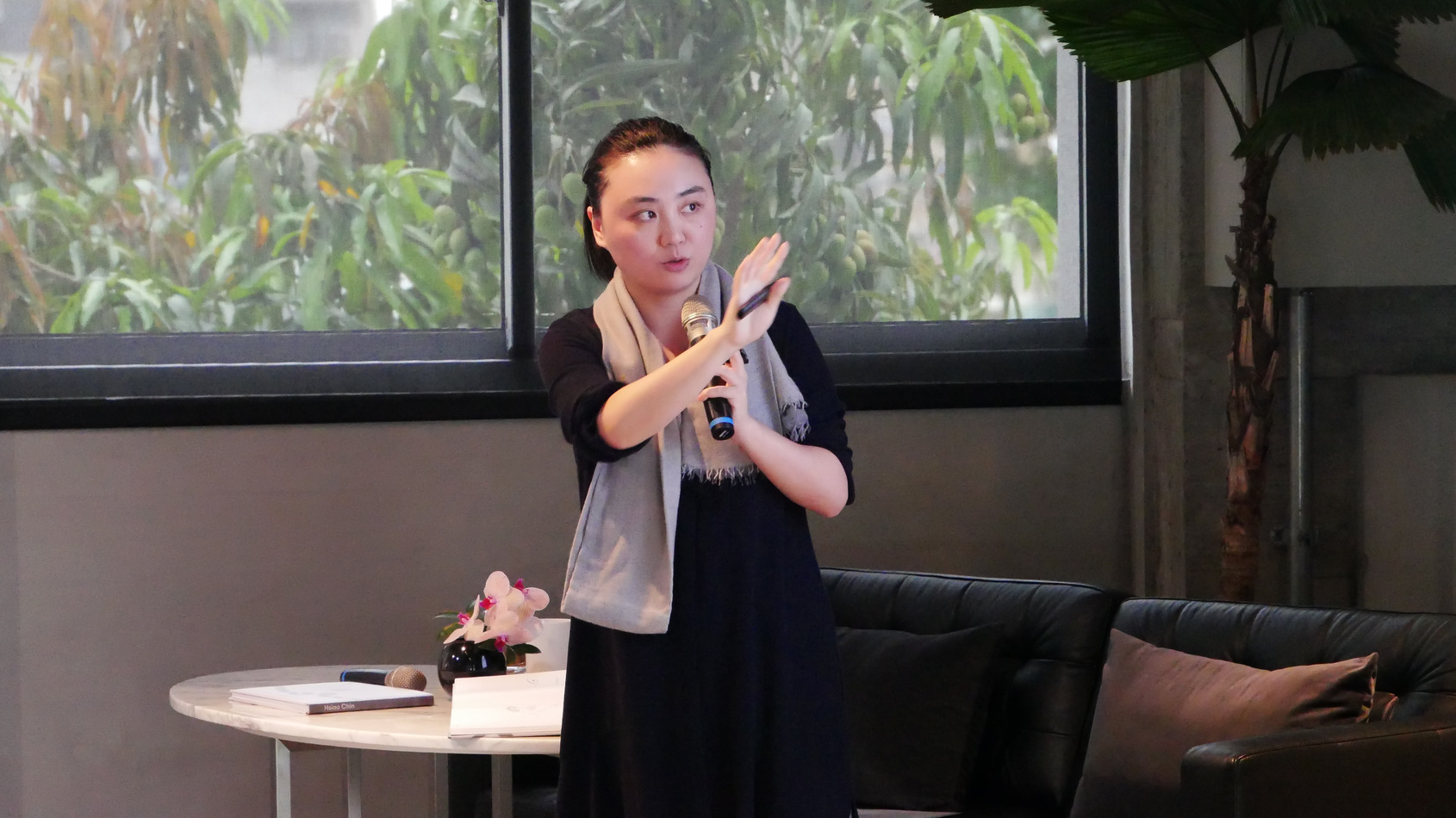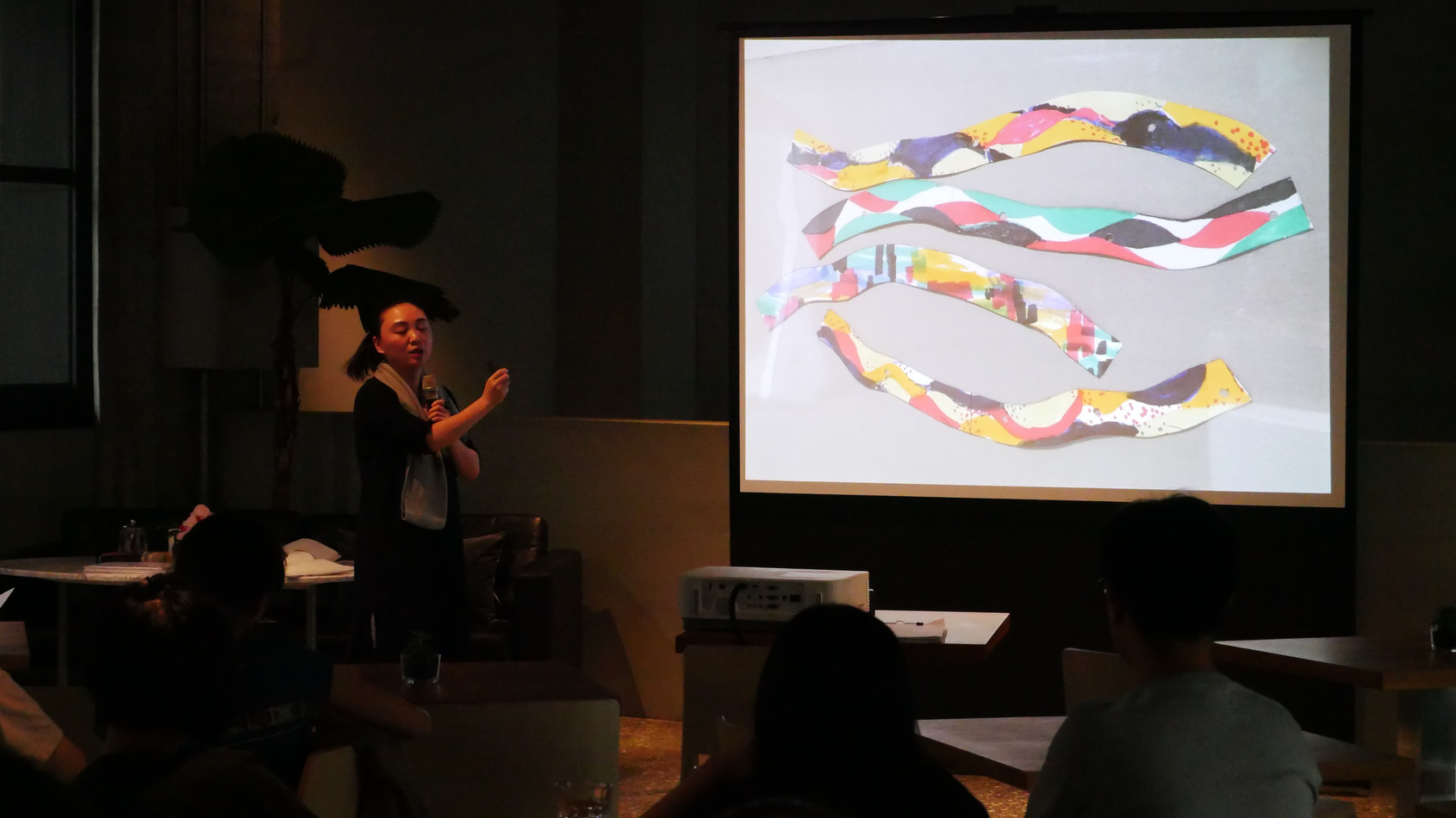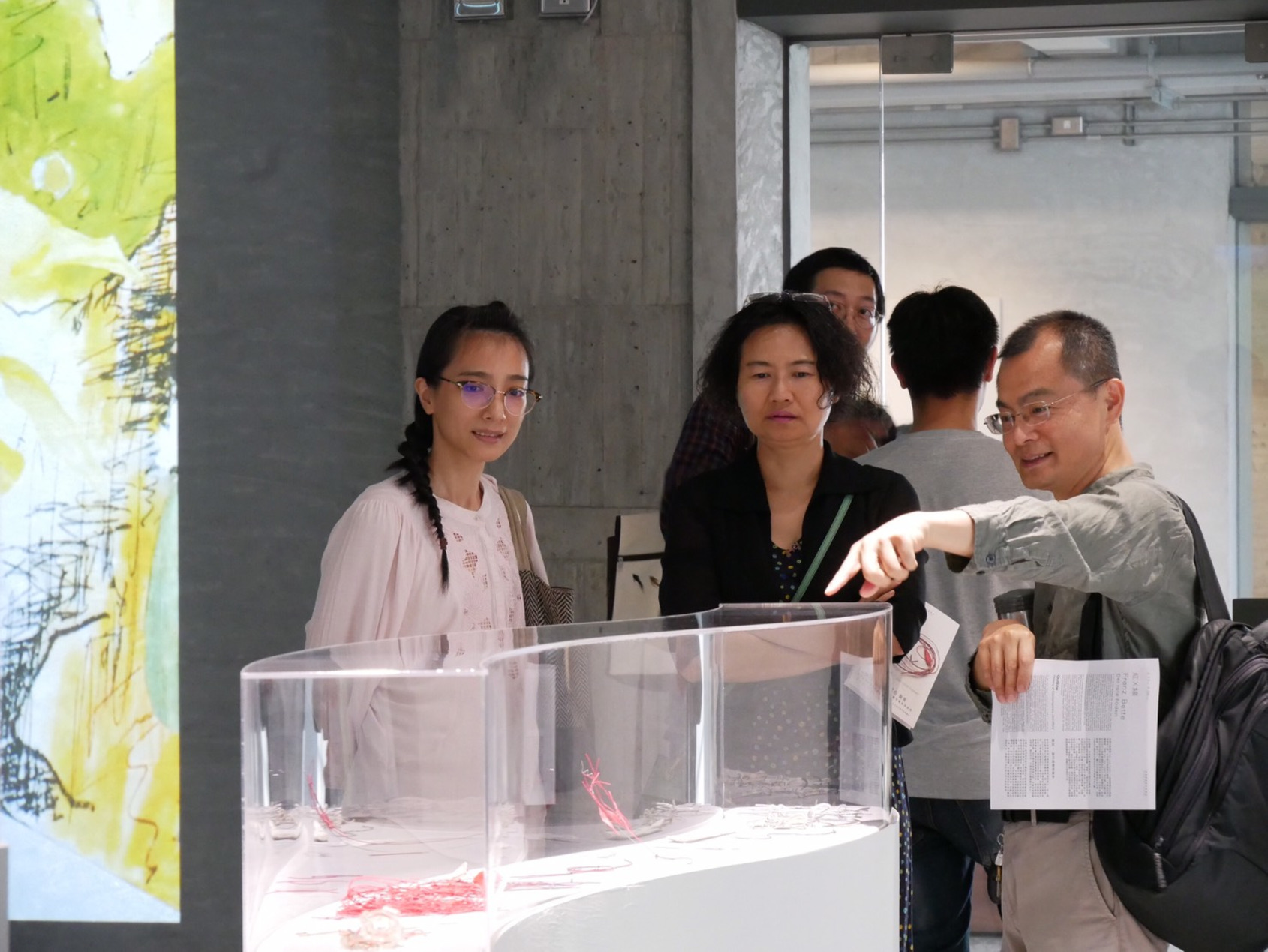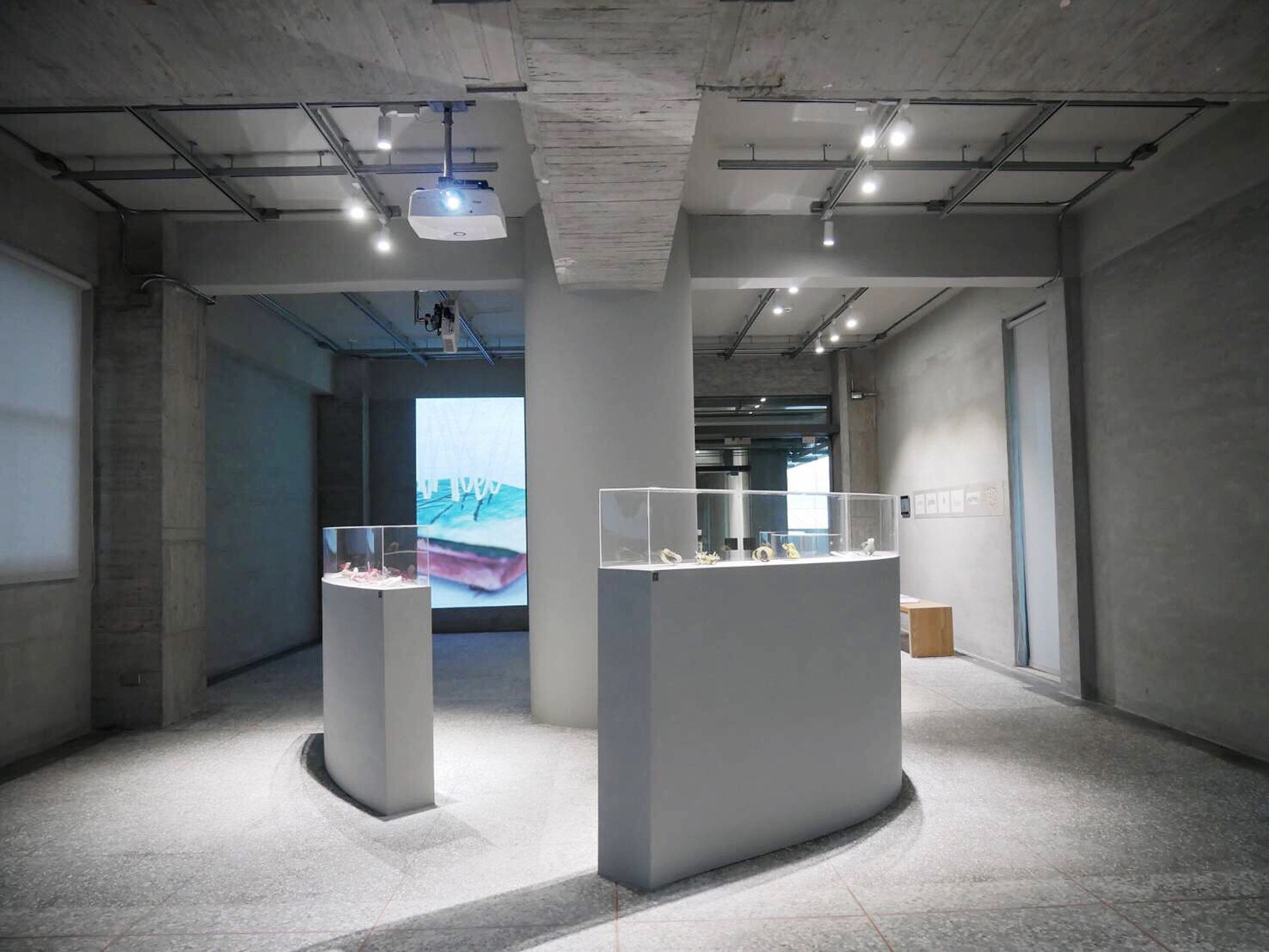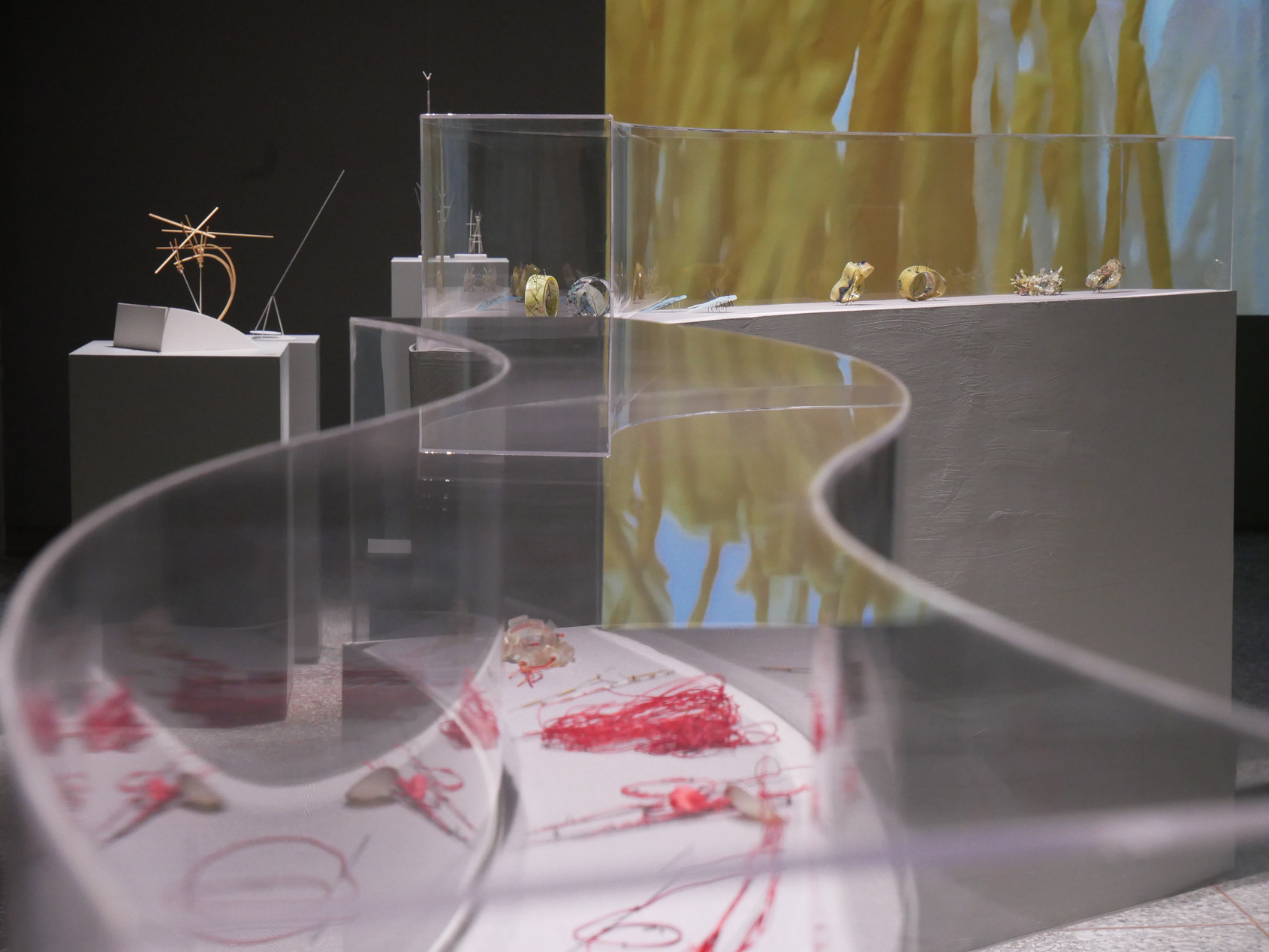
The current exhibition of “Franz Bette: Red X Tread” presents by ALIEN Art Center, Kaohsiung, Taiwan, in collaboration with the Museum of Museum Angewandte Kunst, Frankfurt, German, assembles a body of work of Franz Bette, a German Artist who “has been considering matters of design and critically examining the composition of jewellery, especially its conceptual and artistic formulation, for over 50 years.”
The main exhibits, such as brooch, clip, object and pin shown in space has been well defined the tone of the exhibition. Those artworks – let`s call them in a joint name – PIN, groups together to draw a fundamental connection with the space. Impressively, each pin is separate, but it reflects the one next to it with which it is conditionally connected. Between the pins, there is no identity, but the air, light and shadow. The pin and its shadow in space shaped a parallelized focus that projects a variable yet discursive relationship in between.
No Pin, No Shadow
It is no wonder that if there is no pin in the world, there is no shadow to responds. As such, the partial-themed concept of “no pin” seems a false, fake or pseudo title. The pin, in fact, stays in physical scene can be tangibly sensed without a doubt. The question of how to defend, verify and reasoning the construction of “no pin, no shadow” and in what sort of context, is driven by the way of seeing as well as thinking.
The exhibition setting, for instance, seeks a fresh perspective with a strongly address on connotation. Neither as general as full-completed-artwork dis¬playing nor as orthodox as single-stream-oriented molding, a few small-scale drawings present along with the 3D-work bridges two divided spaces as an exegesis. The line-based drawing waves on the 2D-paper; and the 2D-pa¬per posts on the wall, interacts with each other. A strong sense of aliveness brings along the significant meaning of playability, scalability, variability and openness.
The means of openness, particularly, transfer into an implicit basis for cura¬torial execution, both stable and non-stable settings translate into and all are meaningful in clarifying their notion. Given that the conceptual concern being further interpreted by viewers, the critical challenges to an orderly worldview is to be expected – 2D drawing is not a drawing as usual, but a spatial study across the space, as a pin.
Paradoxically, once the 3D-pin be fasten into the space, as similar as the pin be worn on the body, would it be possible for us to treat it on this way we seldom see – the pin is no longer a 3D-work, but “a perspectival study draw¬ing or spatial sketch” of the space that “examining the subject of the space around the brooch (pin)” – as catalog stated on “Red X Thread”. The boundaries between pin and no-pin, shadow and no-shadow, in such context, has been consequently blurred that reversed the assumption of general belief.
Pin Without Shadows
Without shadows, the pin might be read as a set of interlaced-lines stay on a flat surface. However, instead of being a so-called “still-object”, the pin itself keeps chasing a continuous expansion in physical scene that can be mindful sensed in no time.
The extension of the pin draws 2-dimensional directions with variable actions – horizontal and vertical looping, for the purpose of beyond the boundary of the surface as well as the limitation of the universe. The most incredible part on this for imagination is that a grand vision across time and space just starts from a tiny object, in the way the scale of measurement and the scope of dis¬tance being effortlessly mapped. The shadow-less object, therefore, shapes a seamlessly matching between mapping-space and object-space. Likewise, it performs a subtle tension between real-space and imaginative-space.
Apart from it, it is also important for us to change the perspective with a close attention to the details of the pin. The material selection, for example, is much more complicated than it looks. The sorted materials – parchment and cord, mild steel and bamboo and so forth, mediates an unexpected relation¬ship between “the skeleton and the skin” – as artist self-explains, proves in its sensational flexibility and testability. As metaphor, the shadow-less “skele¬ton and skin” co-works with an asymmetrical balance – that might be further abstracted as pro-wrestling in which “the skin” go wild for a moment with a pointed fasten of “the skeleton” on the open space of flat-land. This artistic interplaying implies: nothing frees the form and minds like the pin without shadows.
Pin With Shadows
With light, each part of the pin casts the remarkable shadows shown in the space, as long as the pin far away from the surface for a tiny inch.
In this regard, artist sensitized and reasoned his way to plays vary from form to colour, from scale to material in such decision, a series of interlocked line-shaped object together with both real and unreal “shadows” – painted lines – constructs a hierarchical structure that yields a notable beauty of complexity – diversified layers glinting with the light shapes an illuminative world of hyperreality that processes highly desirable qualities for its viewers.
Besides, the flat shadow interacts with pin constructing realistic appearance to the space. When the light shifts its intensity, shape, and angle of incidence, reflection from the pin and the shadows continually respond, vary, and shift. Those optical experiences verified a vital position of permanent living as well as spatial free, which ongoing and perceived extend into the future. In doing so, the function of the pin as a boundary in airspace has been expanded. The role of the pin in there with an added function – a counterpoint, links up two independent and interdependent systems, lines and shadows, meet and interact.
Rather, this counterpoint across the space moves beyond the dimension of the time, all experiences while activating spaces have been identified that, the artist not only do his think of this moment and the relevant of the work to space, but he also contemplates his work in relation to what came before and how step further. All elements – proportion, scale, layer, dimension, and even motion and so forth, integrating an explanatory composition placed into the art that reveals a tremendous treatment of dynamic, coherent, and persistent.
Conclusion
Today, there is no time like present that the real-time communication is ex¬tremely easy. Alternatively, the real-time monitoring, from mobile-terminal to manmade-satellite, from micro to macro, has been universalized without a break. An intense sense of wonder we feel in the presence transcends our un-derstanding of the world – as it might further triggers the feeling of disturbance for someone or somehow in specific context.
The exploration of the possibilities of stress shifting has become one of the vital issues relates to everyone. Instead of escaping it, Franz`s spatiotemporal solution – pin or no-pin with or without shadows – for examination unfolds: let the minds run free, and it is there – a crucial exist that strengthen the profoundly meaning of imagination in which the thoughts can be alive time and time again.
